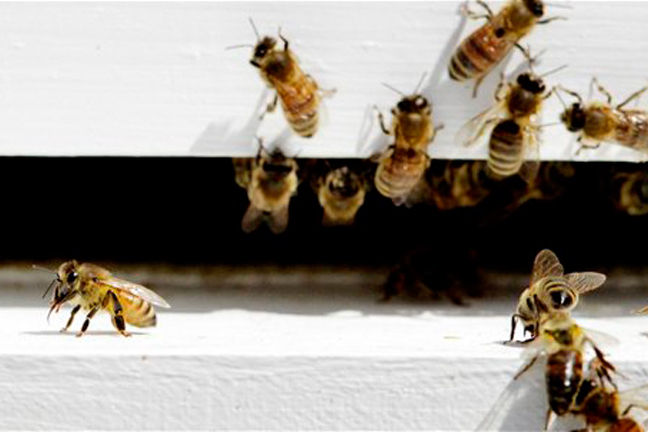
Agricultural News
EPA and Crop Protection Industry Discuss Solutions for Protecting Pollinators
Tue, 05 Mar 2013 15:49:16 CST

The U.S. Environmental Protection Agency (EPA) and the U.S. Department of Agriculture (USDA) host the 2013 Pollinator Summit today, drawing attendance from a variety of stakeholders who will discuss current initiatives and opportunities for improving the health of pollinators, particularly honey bees. Speakers include regulatory officials from EPA and USDA, beekeepers, planter equipment manufacturers, growers and representatives from the crop protection industry, including several speakers from CropLife America (CLA) member companies. Presentations from the summit will focus on equipment innovations to reduce dust emissions from seed products during planting as well as seed treatment product technology designed to minimize pesticide off-target losses during planting. These agricultural practices are aimed at mitigating incidental exposure and enhancing bee safety as well as seed treatment efficacy.
The EPA, USDA and crop protection industry recognize the important role of pollinators in U.S. agriculture, and are working cooperatively to further product stewardship, advance seed technologies and minimize potential impacts on pollinators and the environment. It is estimated that pollinators help facilitate the production of one-third of foods and beverages and account for nearly $20 billion in agricultural production in the U.S. per year. Considerable research and education by the government and private sector has shown that many factors influence pollinator health, including threats from diseases and mites, keeping bees well-fed with proper forage crops and the careful use of insecticides.
The 2013 Pollinator Summit represents just one step taken by EPA to encourage increased collaboration between regulatory bodies and the crop protection industry. EPA and the crop protection industry adhere to measures designed to ensure the responsible use of crop protection products, including:
• Developing appropriate pesticide label instructions;
• Identifying and promoting best management practices for crop protection and bee hive management;
• Encouraging integrated management of bee diseases and pests, especially Varroa mites, which scientists believe severely impact honey bee health;
• Conducting focused research on pesticides and pollinators;
• Developing and implementing better stewardship practices for reducing drift and dust-off through precision seed technology.
"CLA fully supports these efforts by EPA to foster collaboration among the crop protection industry, beekeepers, environmental groups and other stakeholders in developing responsible, science-based strategies that can benefit pollinators," said Jay Vroom, president and CEO of CLA. "Our industry remains actively involved in making progress towards protecting honey bees and other pollinators by working closely with EPA and other agricultural stakeholders. Miticide products can play a beneficial role in protecting bees from certain pests."
Dr. Barbara Glenn, senior vice president of science & regulatory affairs for CLA, added, "The ongoing partnerships between CLA, our member companies and regulatory agencies such as EPA ensure that we can work toward solutions grounded in science and determine how to move forward on bee health issues. The crop protection industry remains dedicated to examining the environmental impacts of crop protection products, along with understanding and communicating best management practices so that healthy pollinators are a functioning part of sustainable U.S. agriculture."
Educational outreach and communications opportunities will also be discussed during the summit, and the American Seed Trade Association (ASTA) will preview a new publication created in collaboration with CLA-The Guide to Seed Treatment Stewardship. The guide will provide farmers and the seed industry with information and up-to-date guidelines on how to effectively manage treated seed in order to minimize exposure to pollinators and other beneficial organisms.
WebReadyTM Powered by WireReady® NSI
Top Agricultural News
More Headlines...



















